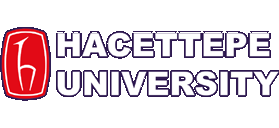ACADEMICS
Course Details
ELE777 - Signal Processing for Communications
2025-2026 Fall term information
The course is not open this term
ELE777 - Signal Processing for Communications
| Program | Theoretıcal hours | Practical hours | Local credit | ECTS credit |
| PhD | 3 | 0 | 3 | 10 |
| Obligation | : | Elective |
| Prerequisite courses | : | - |
| Concurrent courses | : | - |
| Delivery modes | : | Face-to-Face |
| Learning and teaching strategies | : | Lecture, Question and Answer, Problem Solving |
| Course objective | : | This course aims at giving the details of the channel estimation and equalisation techniques used in communication systems, and providing the details of the OFDM technique and topics topics to next generation communication systems. |
| Learning outcomes | : | To teach the details of channel estimation and equalisation, and why they should be used, To discuss and teach several channel estimation and equalisation techniques, and their advantages and disadvantages, To teach the OFDM techniques, to discuss where and why it should be used, and its limitations. |
| Course content | : | Characterisation of communication channels, Channel estimation: Best Linear Unbiased Estimator (BLUE), Minimum Mean Square Error (MMSE) Estimator, Channel equalisation: Maximum Likelihood Sequence Detector (MLSD, Viterbi Algorithm), Zero Forcing (ZF) ve MMSE/DFE equalisers, adaptive equalisers, introduction to blind equalisation, OFDM: OFDM technique, channel estimation and equalisation in OFDM, topics related to OFDM (Peak-to-Average Power Ratio (PAPR), Intercarrier Interference (ICI), Adaptive Modulation) |
| References | : | Proakis, Digital Communications, McGrawHill; Molisch, Wireless Communications, Wiley; Kay, Fundamentals of Statistical Signal Processing: Estimation Theory, Prentice Hall; Haykin, Communication Systems, Wiley; Haykin, Adaptive Filter Theory, Prentice Hall; Goldsmith, Wireless Communications, Cambridge Univ. Press; Tse and Viswanath, Fundamentals of Wireless Communications, Cambridge Univ. Press; Proakis and Salehi, Communication Systems Engineering, Prentice Hall; Rappaport, Wireless Communications: Principles and Practice, Prentice Hall; Haykin and Moher, Modern Wireless Communications, Prentice Hall; Sklar, Digital Communications: Fundamentals and Applications, Prentice Hall; Oppenheim and Schafer, Discrete-Time Signal Processing, Prentice Hall; Hayes, ?The Viterbi Algorithm Applied to Digital Data Transmission?, IEEE Comm.Mag., pp. 26-32, May 2002; Casas, et al., DFE Tutorial, http://www.ece.osu.edu/~schniter/pdf/dfetutorial.pdf |
| Weeks | Topics |
|---|---|
| 1 | Charateristics of Communication Channels |
| 2 | Channel Estimation |
| 3 | Channel Estimation |
| 4 | Channel Estimation |
| 5 | Channel Equalisation (MLSE+ZF) |
| 6 | Channel Equalisation (MMSE) |
| 7 | Channel Equalisation (DFE, Adaptive Equalization) |
| 8 | Midterm exam |
| 9 | OFDM |
| 10 | OFDM |
| 11 | OFDM |
| 12 | Multiuser Communications |
| 13 | Multiuser Communications |
| 14 | Presentations of Term Projects |
| 15 | Final exam |
| 16 | Final exam |
| Course activities | Number | Percentage |
|---|---|---|
| Attendance | 0 | 0 |
| Laboratory | 0 | 0 |
| Application | 0 | 0 |
| Field activities | 0 | 0 |
| Specific practical training | 0 | 0 |
| Assignments | 6 | 20 |
| Presentation | 0 | 0 |
| Project | 1 | 20 |
| Seminar | 0 | 0 |
| Quiz | 0 | 0 |
| Midterms | 1 | 20 |
| Final exam | 1 | 40 |
| Total | 100 | |
| Percentage of semester activities contributing grade success | 60 | |
| Percentage of final exam contributing grade success | 40 | |
| Total | 100 | |
| Course activities | Number | Duration (hours) | Total workload |
|---|---|---|---|
| Course Duration | 14 | 3 | 42 |
| Laboratory | 0 | 0 | 0 |
| Application | 0 | 0 | 0 |
| Specific practical training | 0 | 0 | 0 |
| Field activities | 0 | 0 | 0 |
| Study Hours Out of Class (Preliminary work, reinforcement, etc.) | 14 | 9 | 126 |
| Presentation / Seminar Preparation | 0 | 0 | 0 |
| Project | 0 | 0 | 0 |
| Homework assignment | 13 | 5 | 65 |
| Quiz | 0 | 0 | 0 |
| Midterms (Study duration) | 1 | 31 | 31 |
| Final Exam (Study duration) | 1 | 36 | 36 |
| Total workload | 43 | 84 | 300 |
| Key learning outcomes | Contribution level | |||||
|---|---|---|---|---|---|---|
| 1 | 2 | 3 | 4 | 5 | ||
| 1. | Has highest level of knowledge in certain areas of Electrical and Electronics Engineering. | |||||
| 2. | Has knowledge, skills and and competence to develop novel approaches in science and technology. | |||||
| 3. | Follows the scientific literature, and the developments in his/her field, critically analyze, synthesize, interpret and apply them effectively in his/her research. | |||||
| 4. | Can independently carry out all stages of a novel research project. | |||||
| 5. | Designs, plans and manages novel research projects; can lead multidisiplinary projects. | |||||
| 6. | Contributes to the science and technology literature. | |||||
| 7. | Can present his/her ideas and works in written and oral forms effectively; in Turkish or English. | |||||
| 8. | Is aware of his/her social responsibilities, evaluates scientific and technological developments with impartiality and ethical responsibility and disseminates them. | |||||
1: Lowest, 2: Low, 3: Average, 4: High, 5: Highest
